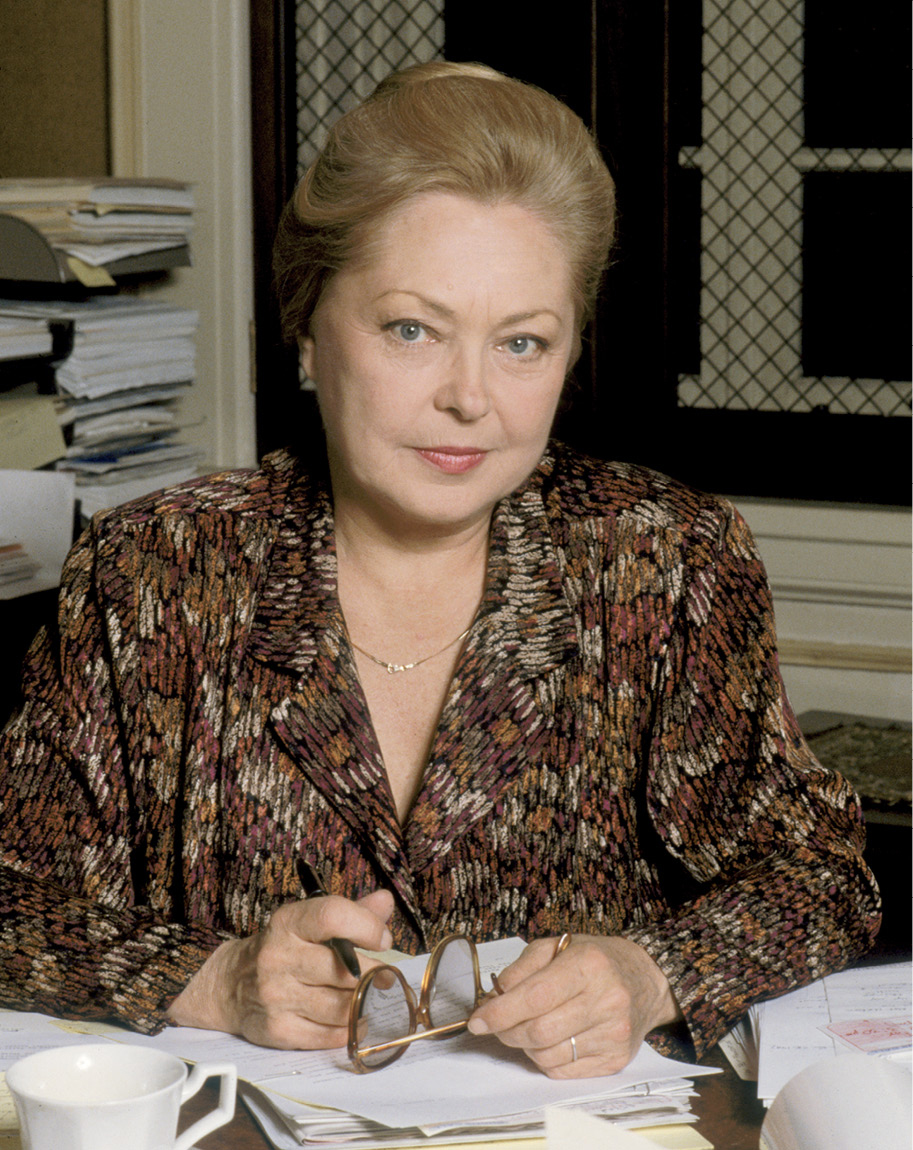Mathilde Krim

Chelsea
In high school, I read And the Band Played On, Randy Shilts’s extraordinary book about the early days of the AIDS (acquired immune deficiency syndrome, caused by HIV or human immunodeficiency virus) epidemic. Shilts detailed the painful toll of AIDS on the gay community in San Francisco and New York in the early 1980s, exacerbated by those in the medical world and government at all levels who ignored the suffering because AIDS was seen as a “gay disease.” Shilts also wrote movingly about the heroic doctors and researchers who did the opposite, throwing themselves into caring for AIDS patients and diving into research to find the cause of the disease and how to stop it. One of those doctors was Mathilde Krim.
As a young scientist in the 1950s, Mathilde studied cancer-causing viruses in Israel. She also studied cytogenetics and was part of the team that developed prenatal testing to determine the sex of a fetus. After she moved to New York, she was a researcher at Cornell Medical College and Memorial Sloan Kettering Cancer Center. Throughout the 1960s and her life, Mathilde supported the civil rights movement, the gay rights movement, and the women’s movement in the United States, as well as the independence movement in Zimbabwe and anti-apartheid movement in South Africa. She was also a strong supporter of Israel, then a relatively new country. Mathilde was clearly not one to shy away from controversial issues or scientific challenges; her character was shaped as a child growing up in Switzerland during World War II. In an interview, she described the experience of watching the liberation of the Nazi death camps: “I confronted the reality that racism is murderous.” She would later realize that bigotry in any form can kill.
Early in the AIDS epidemic, Mathilde was one of the first scientists to recognize that AIDS was a new disease with possible catastrophic consequences. In 1983, she and others started the AIDS Medical Foundation to raise money to fund research. Her efforts were particularly important at the time because the American government was largely ignoring AIDS, with the exception of a few notable heroes at the Centers for Disease Control and the National Institutes of Health.
“Most people start with this idea that they can’t do anything because ‘I’m only a little guy and I can’t have an effect on public policy.’ It’s not so. Everybody can do something.”
—MATHILDE KRIM
In addition to raising research dollars, Mathilde pushed New York City and the federal government alike to invest more in AIDS; to name AIDS; and most important, to treat AIDS patients with dignity. She pushed her medical colleagues to do the same. When asked by a New York Times reporter why she had gotten involved, she answered, “Because I was incensed! So many young men were dying.… And many would be dying abandoned or alone because they were afraid to contact their families.” She made it her personal mission to provide compassion, good medical care, and hope.
Her work and advocacy, along with the work of other researchers and health care providers, yielded real results. In 1985, Congress significantly increased AIDS research funding. In 1987, the American Medical Association declared that doctors have an obligation to care for people with AIDS, including asymptomatic patients. Throughout the 1980s, Congress allocated more and more funding for AIDS research. In 1990, Congress passed the Ryan White Comprehensive AIDS Resources Emergency Act, which was then and remains the largest federal program for people living with HIV/AIDS.
Alongside the doctors who were waging a research battle were advocates like Elizabeth Glaser, who contracted HIV in 1981 from a blood transfusion while giving birth to her daughter, Ariel. Elizabeth later passed on HIV unknowingly to Ariel through breastfeeding, and to Jacob, her son, in utero. The Glaser family raced against time to fight for access to treatment. Tragically, it was too late for Ariel. Galvanized by Ariel’s loss, the Glasers started a foundation to raise funds for pediatric AIDS research. Elizabeth’s work, like Mathilde’s, helped save other lives, including her son’s. A few years before Elizabeth’s death in 1994, she wrote about her family’s struggles with HIV/AIDS in In the Absence of Angels. As my Grandma Ginger would have said, both Elizabeth and Mathilde were engaged in God’s work—and, I think she would say, closer to angels than most people would ever be.
Larry Kramer, the great playwright and LGBTQ rights activist, once said of Mathilde: “One can only be filled with overpowering awe and gratitude that such a person has lived among us.” I agree. I was proud to honor her in 2011 at an event for amfAR, the Foundation for AIDS Research, a successor organization to the one she started in the early 1980s. I talked that night about how grateful I am to live in a world with real heroes like Mathilde, who saved countless lives through her resolve, adaptability, curiosity, intelligence, and heart. I believe Mathilde would be appalled, but not surprised, by current efforts to diminish HIV/AIDS research, prevention, and treatment funding in the United States and around the world. We must protect the progress she, Elizabeth, and many others fought so hard for and keep fighting until every patient with HIV/AIDS is treated with dignity and receives the treatment they need, while continuing the search for a vaccine and cure.